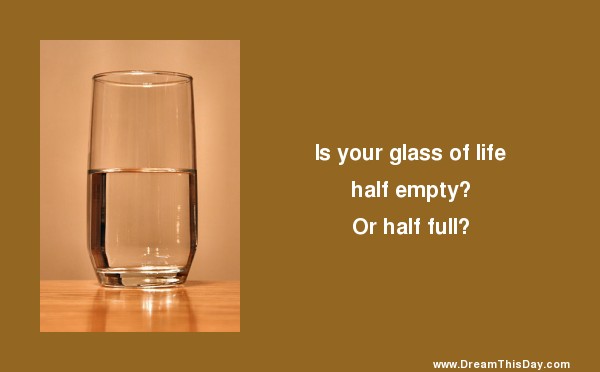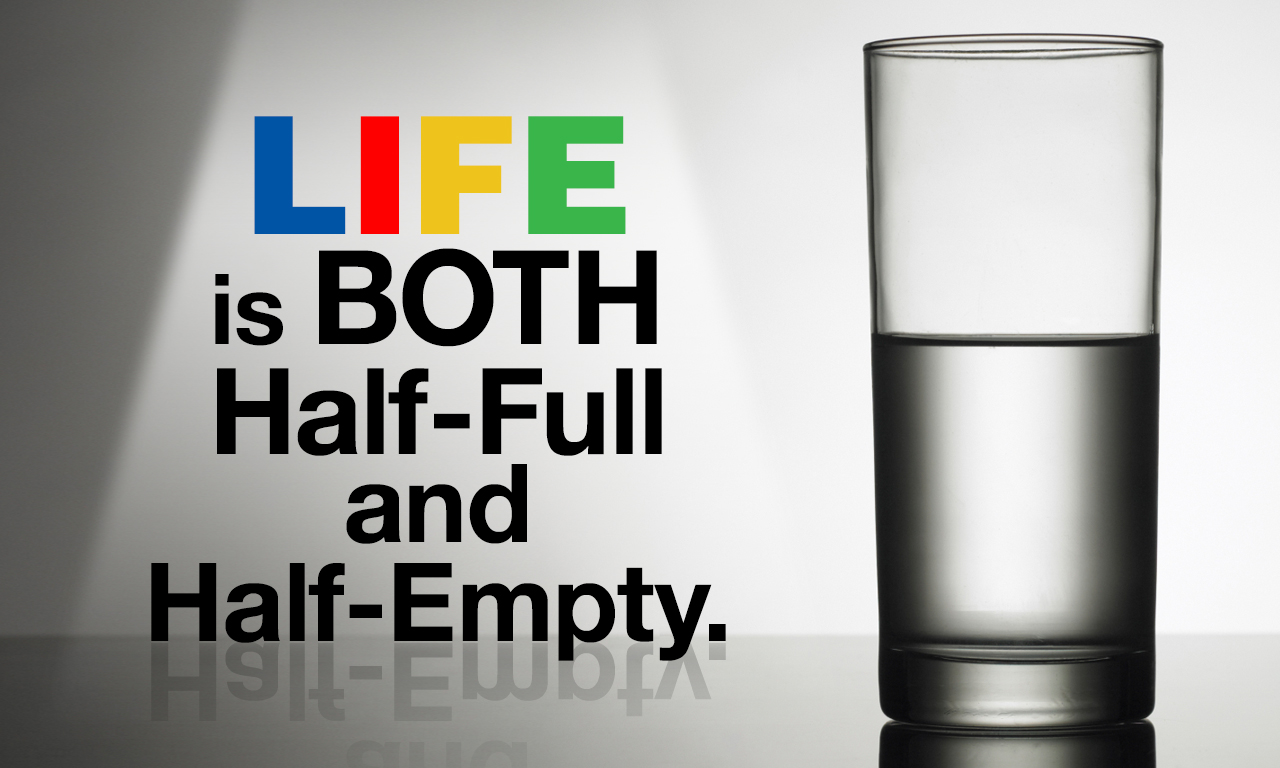
“Is the glass half empty or half full?" is a common expression, a proverbial phrase, generally used rhetorically to indicate that a particular situation could be a cause for optimism (half full) or pessimism (half empty), or as a general litmus test to simply determine an individual's worldview. The purpose of the question is to demonstrate that the situation may be seen in different ways depending on one's point of view and that there may be opportunity in the situation as well as trouble.
This idiom is used to explain how people perceive events and objects. Perception is unique to every individual and is simply one's interpretation of reality. The phrase "Is the glass half empty or half full" can be understood also as a philosophical question.
Another perspective comes from psychology, where research has shown that a speaker's choice of frame can reflect their knowledge of the environment, and that listeners can be sensitive to this information.’1
‘Buddha remarked on the enormous impact of perspective on human psychology when he said, "life is a creation of the mind." Shakespeare put it this way when he said "there is nothing good or bad, but thinking makes it so." And Flip Wilson's character, Geraldine, brought this idea to life with a laugh when he said "what you see is what you get." A big part of therapy is working to understand that what we see in our lives has a lot to do with how we see it.’2
And now the pertinent question is: ‘Is your glass half full or half empty, or both or neither?’

Photo: bing.com
‘You’ve likely been asked how you see the proverbial glass: half full or half empty? Your answer allegedly reflects your attitude about life—if you see it half full, you’re optimistic, and if you see it half empty, you’re pessimistic.
Implied in this axiom is the superiority of optimism. Culturally, we’re obsessed with positivity—our corporations measure worker glee, nations create happiness indices, and the media daily touts the health and social benefits of optimism. Thus, the good answer is to see the glass half full. Otherwise, you risk revealing a bad attitude.
Rarely—if ever—is the complete answer to the question considered, however. Actually, the glass isn’t half full or half empty. It’s both, or neither. The glass is in a state of continual change, so no need to feel some type of way. As Shakespeare wrote in Hamlet, “For there is nothing either good or bad, but thinking makes it so.”
Things aren’t mutually exclusive, awesome or awful. Mostly they’re both, and if we poke around our thoughts and feelings, we can see multiple angles. To Hamlet, Denmark was a dungeon. But the real prison was his thinking, as he admitted.
Neutrality sets us free. It helps us see something more like the truth, what’s happening, instead of experiencing circumstances in relation to expectations and desires. This provides clarity and eliminates obstacles, making things neither awesome nor awful but cool.
It can even lead to illumination. In fact, abandoning duality is the way to enlightenment in the Taoist and Zen Buddhist traditions. “Truth has no this or that. The path has no ordinary or holy,” said Zen master Fu-Jung 1,000 years ago.’…Continue to read
Footnotes:
Read more:
What is this life all about?
Why am I here? What’s my Life’s purpose? How can I make the most of my Life?
